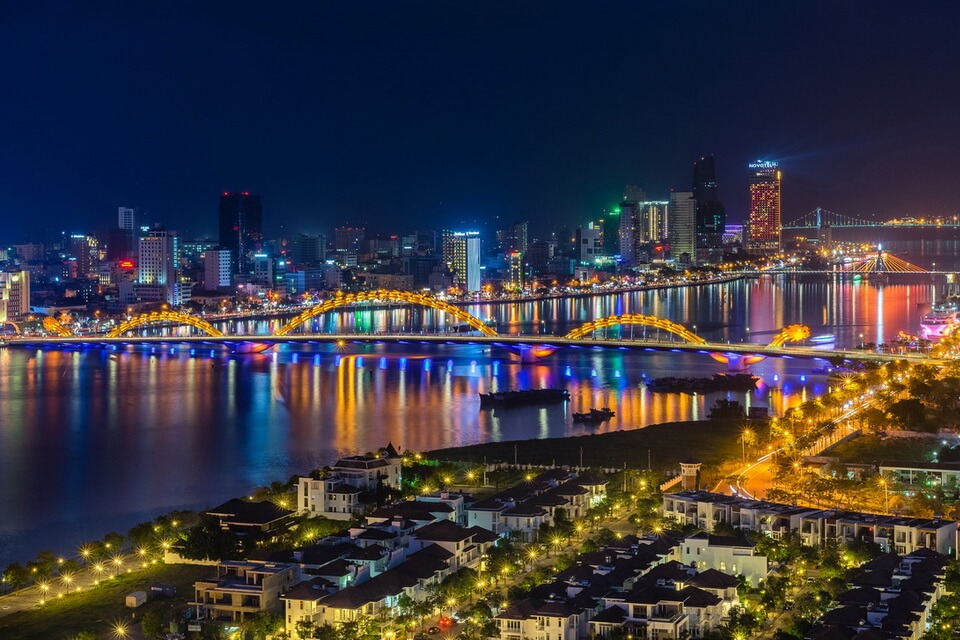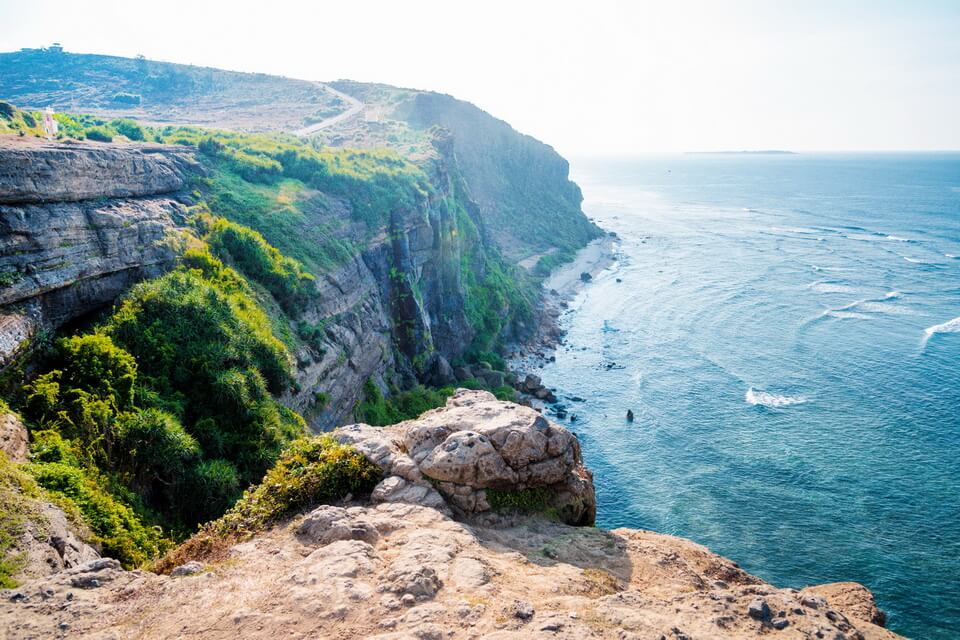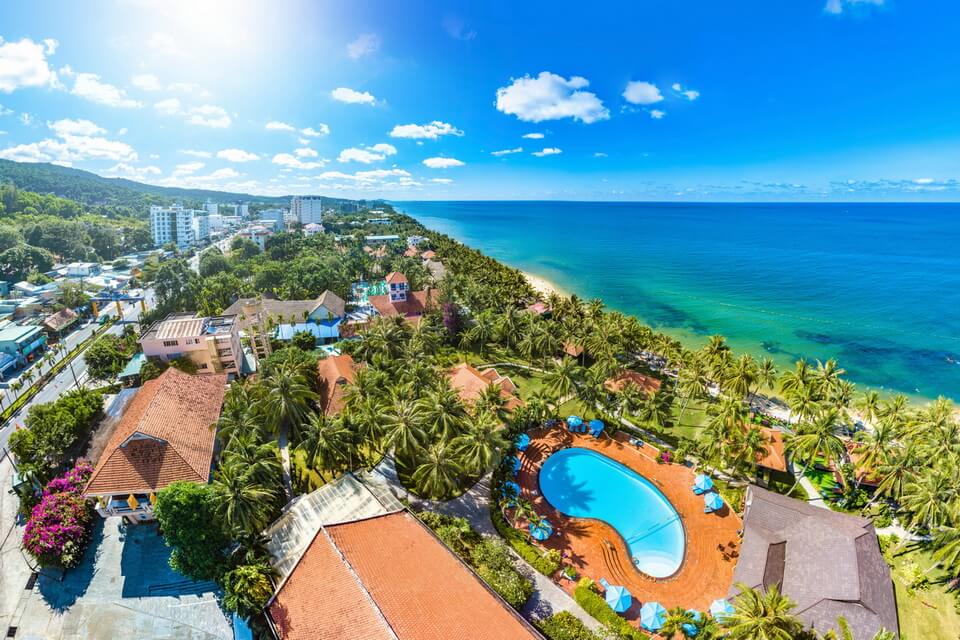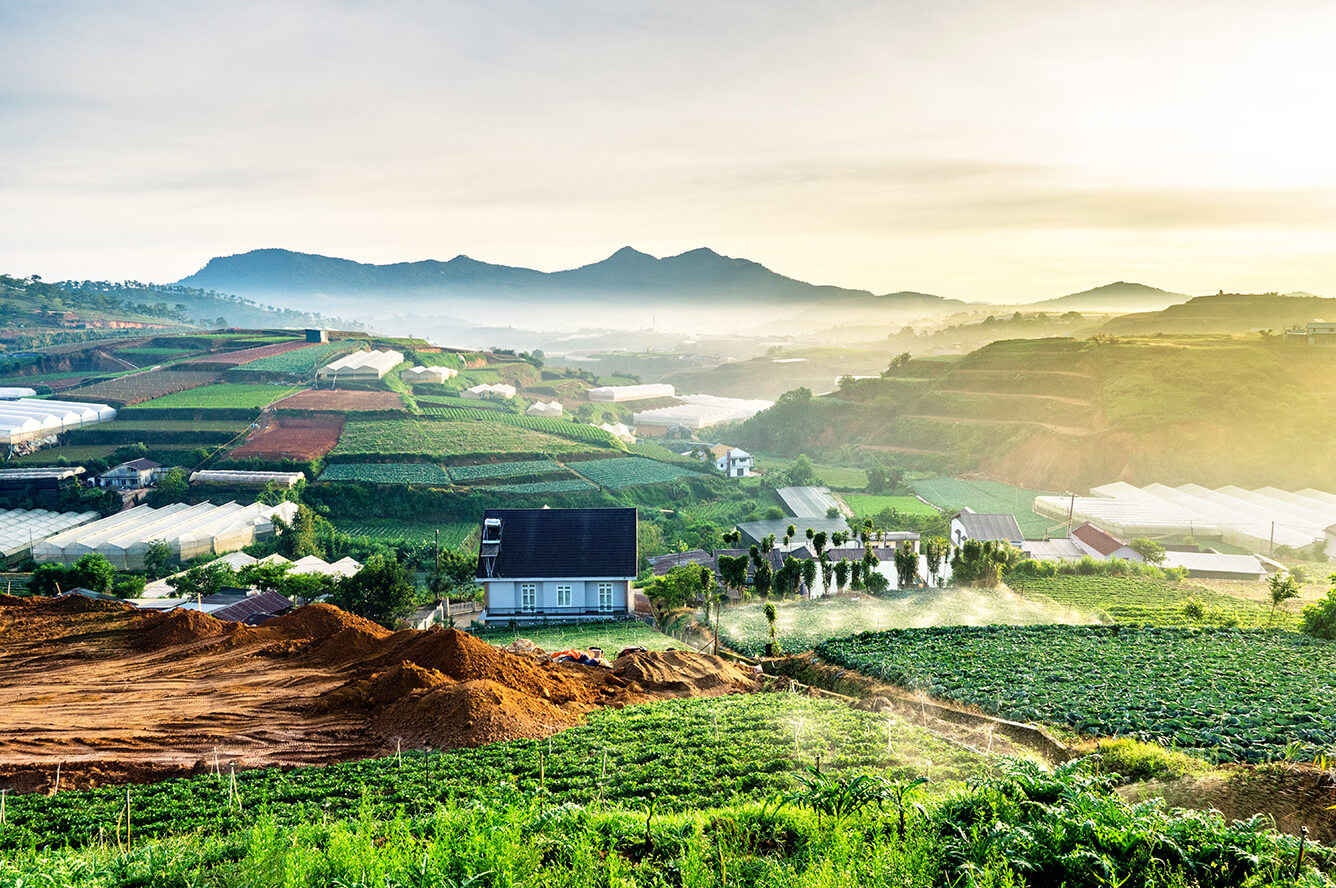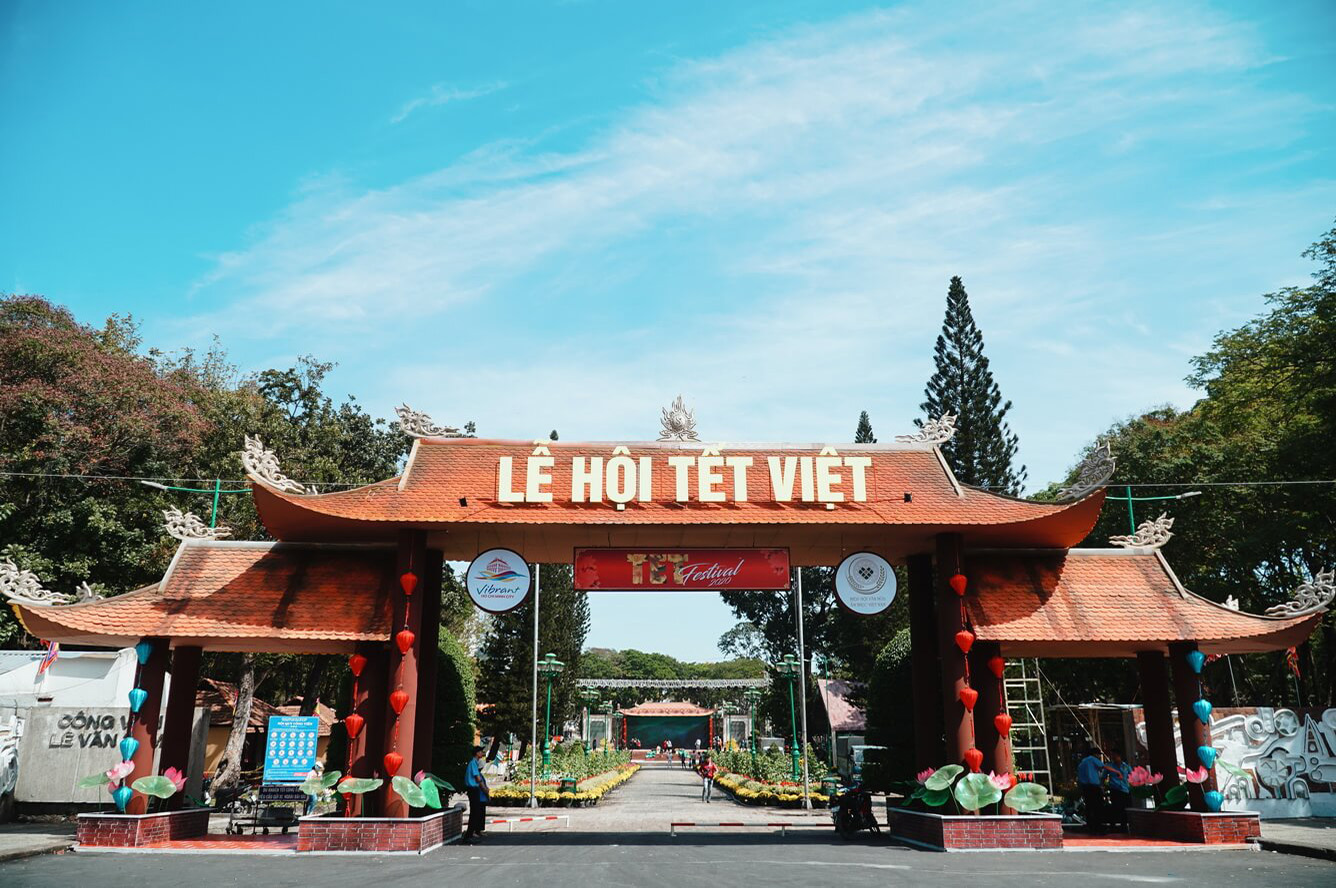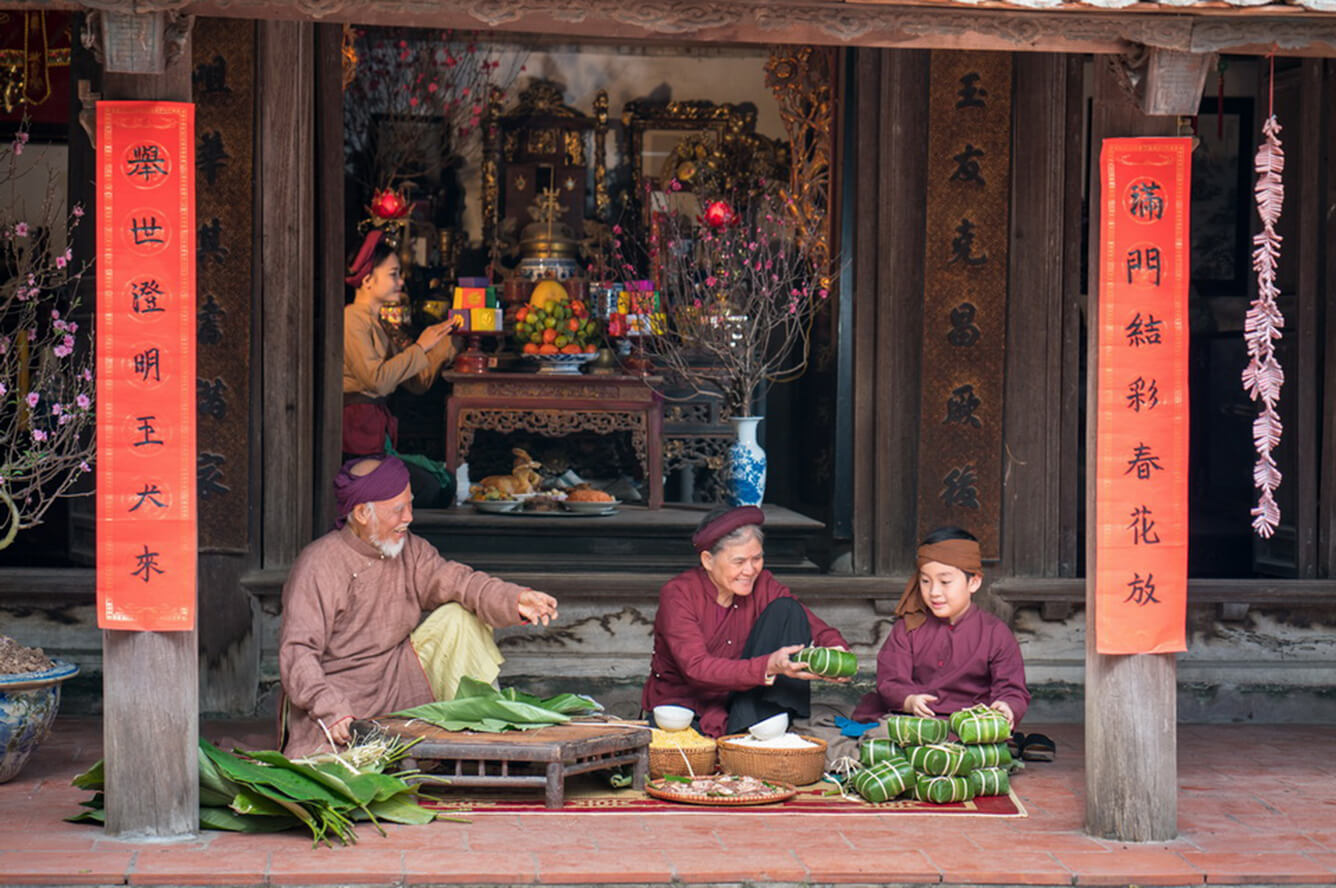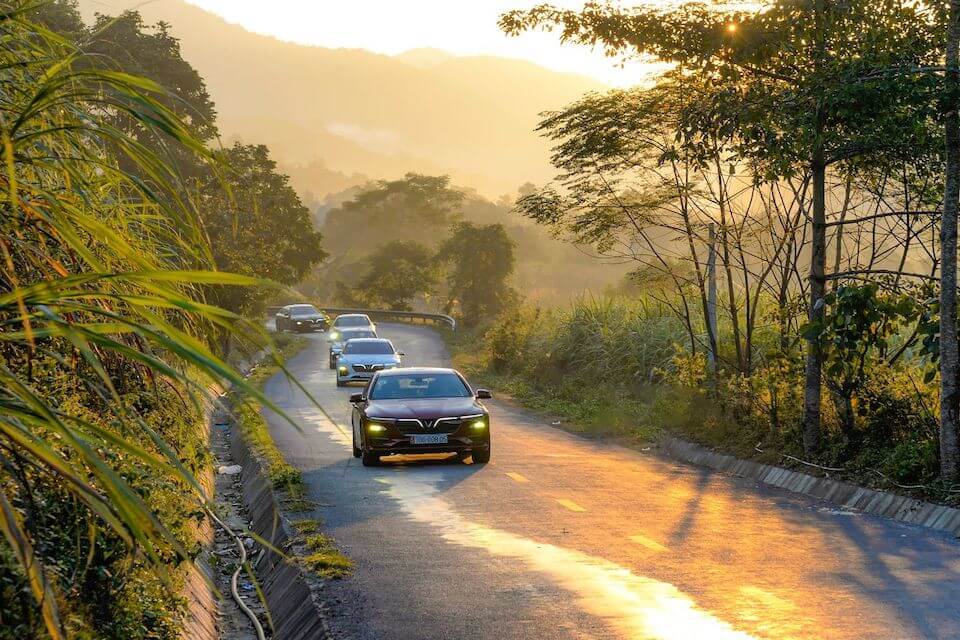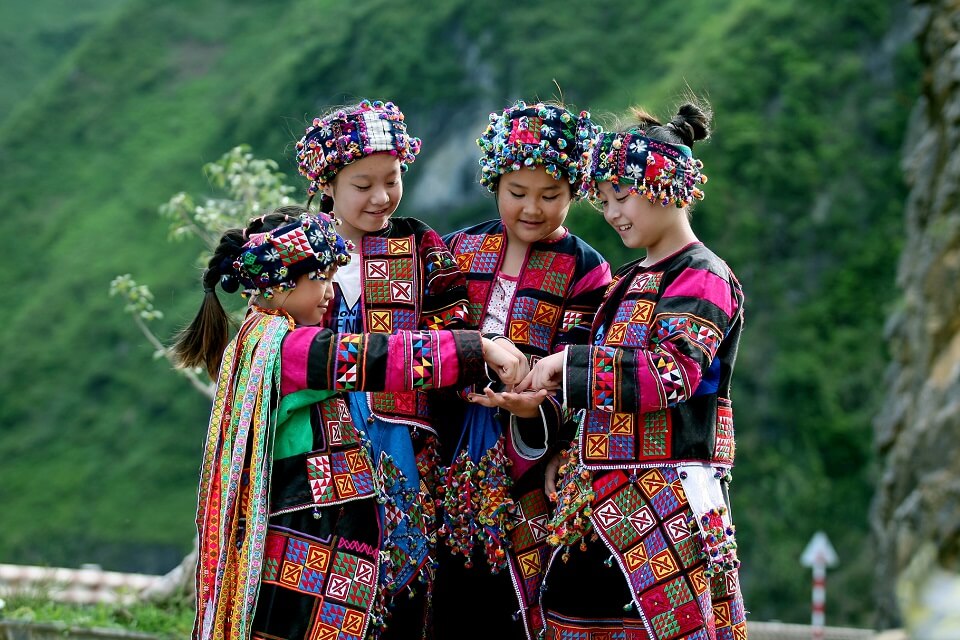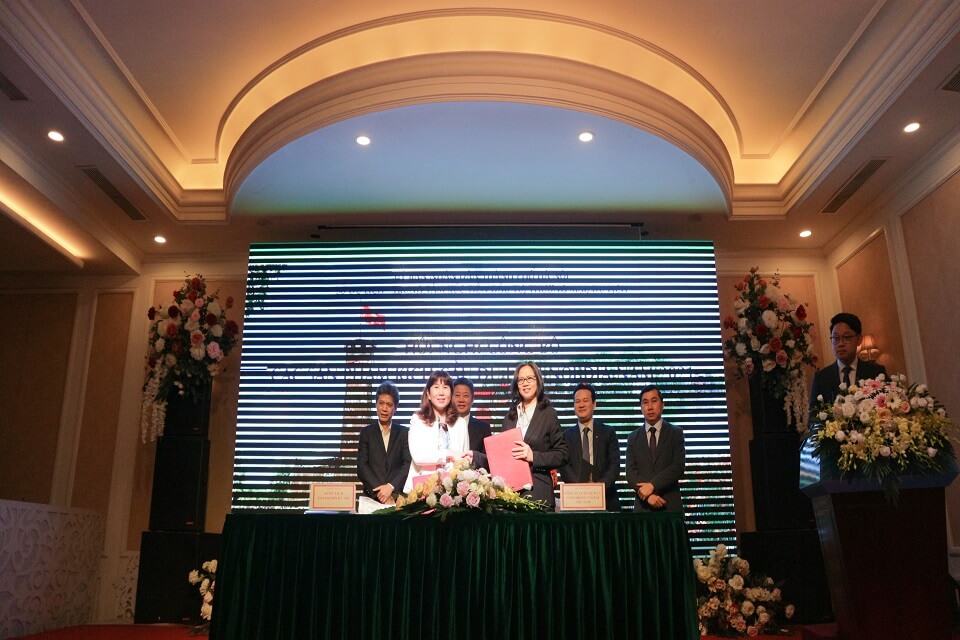Ha Noi - The capital of Viet Nam
The living standard of the people increases 3.5 times in comparision with 1990. There are 18,000 enterprises in non - state sectors.
Upon the promulgation, the Law on Foreign investment in Vietnam on Dec 1987, and together with the realization of a series the Open-door Economy Policies, 42 nations and territories and hundreds of foreign groups and companies have entered Hanoi to look for investment and business opportunities. This market is estimated to be of great potential by foreign experts. As to the end of 2003, in Hanoi, there are 601 projects which have been granted investment licenses with the total investment capital of USD 9.1 billion. In there includes: 345 JV projects, 227 one - hundred percent foreign investment projects, 29 business co-operation projects. Five Industrial Zone have been established (Noi Bai - Soc Son Industrial Zone, Sai Dong B Industrial Zone, Thang Long Industrial Zone, Taiwan Industrial Zone) with the total area of 784 ha and the investment capital of USD 250 million for technical infrastructure. The foreign direct investment capital makes an important contribution to the economic restructuring, industrialization, modernization of Hanoi city and fast contribute economy structure: Industry - Service - Agriculture. In the last 10 years, Hanoi had attracted USD 712 billion for developing technical and social infrastructure system, environmental protection and social welfare. The total social investment increases 15 % - 17% annually.
To undertake and use the foreign direct investment capital effectively, Hanoi has created an attractive investment environment with the potentials and convenient conditions as follows:
- Hanoi is the capital of the Socialist Republic of Vietnam - the political center, where the offices of Vietnam leader are located such as: party Central Committee, Government, Ministries… Hanoi has a stable political basis, the economic policy is open, flexible, political basis, the political security and social order are guaranteed. Hanoi is located in a good place, the Economic and International transaction center of the whole country.
- Hanoi is gathered with the intellectual human resources which is accounted for 62 % of the whole country science and management cadres who gained university certificate, professors, masters and are living and working in Hanoi.
- Hanoi citizens’ standards of culture and working skills are rather high. They are able the modern technology and management in very short time. The labor cost in Hanoi is reasonable.
- The Hanoi market potential is big. The Hanoi market also influences to other northern provinces all country, south of China, Laos…
- The administration procedures to grant the Investment License for projects (especially the industrial project) are executed easily, conveniently and fast
- The expenses such as social services, property and land rental, water and electricity are lower than other trade centers in Vietnam (especially the land rental is 25% off as compared with the price in the past).
To become an industrial city, a modern capital which can be compared with other capitals and large cities in region up to the year 2010, Hanoi authority has issued the General Master Plan to develop the Capital Economy and Society to the year 2010, use to maximum the local potential and make good use of foreign capital resources such as FDI, ODA… to develop the City basic economic standards from 2 to 2.5 times until 2010. It is hoped that the Hanoi future achievements and results are helped importantly from the foreign investors.
Covering an area of more than 918 square kilometers, Hanoi comprises two different topographical features: the delta and the Middle Region of the North. Most of the deltaic land lies on both sides of the Red River and its tributaries (Đuống, Đáy, rivers, etc.). The Middle Region comprises Sóc Sơn district and a portion of Đông Anh district, a prolongation of the Tam Đảo mountainous mass stretching towards the Delta which is 7-10 meters or sometimes even hundreds of meters above the sea level.
This is why Hanoi topography has an inclination in the direction North - South (from Sóc Sơn - Đông Anh to Thanh Trì). Hanoi lies at the center of the triangular basin of the Red River. 50 km from Hanoi to the North lies the tourist site of Tam Đảo, and the same distance to the South West is Ba Vì.
In Hanoi region, the chain of Sóc Sơn (Sóc Mount) is a prolongation of the mountainous mass of Tam Đảo, which culminates at a height of 308 meters. This chain has different appellations: Mã Mount, or Temple (Đền) Mount (because there is a temple on the summit of the mountain, called Sóc Temple, at the place of which Gióng Genius was deified, rising to the sky on his iron horse), or Ve Linh Mount. Sóc Mount is situated in the commune of Phu Linh, Sóc Sơn district. Besides these Hanoi has other hills and mountains rising above the flat ground: Sái Mount (Thuy Lam commune, Đông Anh district), Phuc Tuong Mount (Co Bi commune, Gia Lam district) and at the center of Hanoi, above the area of the old Botanical Garden stands the Nung Mount, also called Long Đo or Khan Mount, giving more picturesqueness to the configuration of Thăng Long.
Hanoi region, lying in a plain, far form sea, belongs to the hot climatic zone under the influence of the South and Northeast monsoons. Winter is cold and dry and from February to March, drizzles and the Northeast monsoon are frequent. It is hot from April to June, but from July to September, there are heavy rains and floods followed by Autumn which is the most beautiful season in Hanoi. Annual average rainfall in Hanoi is 1,678 mm. Temperature in January is 160C, in June 280C (sometimes reaching 360 - 380C). This gives an annual temperature variation from 80C to 400C.
From Hanoi, we can reach every part of the country thanks to a convenient communication system. You can fly from Nội Bài International Airport (Sóc Sơn district, 40km from the center of Hanoi) or Gia Lâm airport (8km from Hanoi), which was the principal airport of Hanoi before 1970, now being used for tourist helicopter flights to place of scenic beauty. Hanoi is also a railway junction for both domestic and international lines with routes to Beijing (China) and Europe... It is also a point where land and shipping routes converge. It is said, "all roads lead to Hanoi".
Hanoi has enjoyed many favorable conditions since long ago, since the day when King Lý Thái Tổ decided to transfer his capital from Hoa Lư (Ninh Bình) to Đại La which became the capital Thăng Long in the month of July of the Year Canh Tuất (1010), by Royal Edict on the transfer of the capital. So, Ly Thai To was both the founder of the Lý Dynasty (1010 -1225) and that of Thăng Long - Hanoi.
In 1999, Hanoi had 2,711,600 inhabitants including the central area and the suburbs. In the suburban districts and also a portion of Tây Hồ district, most of inhabitants are natives of Hanoi, whereas in the districts of the central area, the inhabitants came from different parts of the country to earn their living or to work in government offices and have settled there. Hanoi inhabitants are essentially the Viet but we can also notice the presence of other ethnic groups.
Thanks to its geographical vantage point, Hanoi enjoys a favorable position as a domestic and external trading center. It is the hands and the minds of the laborious and creative Hanoians of the past and present that have made this city worthy of being the political, economic and cultural centre of the country, the capital of the Socialist Republic of Vietnam and one of the most attractive capitals in the world.
THE PRE - THANG LONG PERIOD
Archeological discoveries suggest that the presence of the graves in Cổ Loa date back to the same years as those found in Lào Cai and Nghệ Tĩnh. They have found the cutting tools of primitive people living in the Stone Age, about 10,000-20,000 years ago. At the end of the Ice Age as natural changes occurred ancient Hanoi became a flooded area and the inhabitants left for the mountains. About 10,000-7,000 years ago ancient Hanoi was turned into a hilly tree-covered area and the population moved back to settle down. Archeological excavations have revealed the existence of different cultures a discernible lineage ranging from the Bronze Age to the Iron Age (about 20 centuries BC).
THE LY DYNASTY (1010-1225)
Royal Proclamation of Shifting the Capital
The Đinh and the Lê dynasties had completed their glorious mission of consolidating national independence and bringing the country to reunion. The role as temporary capital played by Hoa Lư also came to an end. The Ngô, Đinh, Lê dynasties had given rise to the development of an economy and culture. In 1009 Lý Công Uẩn came to power, starting a new period in the history of the nation.
Thanks to his excellent political forethought he discovered that Đại La (ancient Hanoi) had a strategic position. After a boating excursion on Cái River, he wrote a proclamation for shifting the capital.
In July 1010, he decided to shift his capital. One day, the King escorted by his mandarins started his journey from Hoa Lư to Đai La. On arrival, he changed the old name of the city into Thăng Long (Soaring Dragon).
THE TRAN DYNASTY (1226-1400)
The Lý dynasty collapsed on 1 December in the Year of the Cock, (1-12-1226) after Trần Thủ Độ got the Queen Lý Chiêu Hoàng to issue an edict conceding the throne to her husband, Trần Cảnh. The Trần dynasty opened an era of more dynamic, stable and solid development which lasted until the middle of the 15th century. Under the Trần Dynasty, Thăng Long was the greatest political, economic and cultural centre of the nation. The transfer of power was carried out peacefully causing no great changes to Thăng Long.
THE MAC, THE RESTORATION AND THE RECESSION OF THE LÊ DYNASTIES (1527-1788)
At the end of the Lê dynasty, the Court itself had become weakened and unstable, it was presided over by a powerless Emperor Lê Uy Mục. The socio-political crisis was severe and it reached its peak in the 18th century because the ambitious mandarins ultimately governed only in their own interests.
The most notable rivalry was led by Mạc Đăng Dung. He had experienced being an imperial guard under Lê Uy Mục, then Deputy Commander-in-Chief and an Earl under Tương Dực, then a marquisate and a Duke under Chiêu Tông. By that time he commanded 13 marine and ground regiments, this was until Cung Hoàng Mạc Đăng Dung became an influential person. It has been noted that he "had defeated many enemies, gaining greater and greater power, whereas the Emperor's army was weak. "The people's hearts were with Mạc Đăng Dung" - from Đại Việt thông sử by Lê Quý Đôn. Mạc Đăng Dung had proved himself to be a talented man of great privilege, and so Thăng Long once more witnessed an important event: the take-over of the Lê by Mạc dynasty (1527).
The Mạc, however, came to power during a complicated situation where the decentralisation of power became acute, preventing the unification of the country.
In 1592 Trịnh Tùng, Trịnh Kiểm's son conquered Đông Đô. Mạc Mậu Hợp was killed. Lê Thế Tông was helped by Trịnhs' noble family to become the Emperor. This is a unique event in the history of Vietnam that a country was ruled by both an Emperor and a Noble Lord, it was called the Dynasty of the Lê Restoration.
The Mạc dynasty opened a period of disagreements, the conflict between the North Court, controlled by the Mạc and South Court, controlled by the Lê dynasty, then the rivalry between Đàng Ngoài (in the North) and Đàng Trong (in the South).
Although the political situation under the Mạc was rather complex, the economy and culture actually saw a rapid development. Markets were set up in many places, especially in Kiến An. The urban population grew fast, some people became the owners of shops and workshops, but the majority were small producers and traders. This is why Thăng Long did not surpass the model of a middle-age urban structure to define itself as a "free city" as it would have done in the West. It was in this period that Thăng Long witnessed the development of culture and of the examination system. Many intellectuals were awarded doctorate degrees, among whom Trần Thị Duệ was a woman. Some of them became great intellectuals, such as Nguyễn Bỉnh Khiêm and Phùng Khắc Khoan. Among those who established the glorious chapter of Thăng Long, some were of Hanoi origin, such as Đặng Trần Côn and Bùi Huy Bích, and some were from elsewhere, such as Lê Quý Đôn, Nguyễn Gia Thiều and Đoàn Thị Điểm. This period made a step towards the cultural restoration of the centuries to follow.
Under the Restoration of the Lê, Thăng Long underwent a lot of changes. Separate from the royal palace stood Lord Trịnh's Palace, the real headquarters of the nation, with many luxurious structures, such as Lầu Ngũ Long (Five-Dragon House) on the east of Hoàn Kiếm Lake (the Lake of the Restored Sword), Đình Tả Vọng (Ta Vong Local Temple - Turtle's Island now) and Thuy Khánh Palace (on Jade Mountain). Also notably a lot of commercial firms were established by Dutch and English merchants and especially by Chinese boat people. The rivalry between the Trịnh clan in the north, and the Nguyễn clan in the south, ended in 1786 in an uprising led by Nguyễn Huệ, a great commander and strategist.
Handicrafts flourished in Thăng Long thanks to the talented artisans and craftmen who had brought the crafts from other parts of the country to the city. They grouped together according to their occupations, such as cotton, silk and dyes in Trúc Bạch, Yên Thái, Trích Sài, Nghĩa Đô, copper in Ngũ Xã, red silk in Hàng Đào and soon. The street names indicate the business or trade of the residents and they were a good guide to the Thăng Long society, such as inlay in Hàng Khay, jewelers in Hàng Bạc and drums in Hàng Trống. In spite of the many changes, Thăng Long was the largest political, economic and cultural centre in the country.
In the summer of 1786, the Tây Sơn armies led by Nguyễn Huệ overpowered the Trịnh Lord, the position which had existed for 241 years (from 1545 to 1786). During this period 194 years had been spent in Thăng Long. On July 21st, 1786 Tây Sơn troops gained control of Thăng Long, and ended the division of Đàng Trong and Đàng Ngoài, and reunified the country after 2 centuries. The Lê dynasty came back to control the country. Nguyễn Huệ married Princess Lê Ngọc Hân in Thăng Long and then returned to the South.
The Emperor Lê Chiêu Thống could not manage to rule the country, rival forces had risen up many times to seize power. Nguyễn Huệ came back to Thăng Long twice to suppress the rebels. At the end of the year 1788, Lê Chiêu Thống left for China to enlist the help of the Chinese feudal empire. On December 16th, 1788 a 290,000 strong Thanh (Qing) army pressed their expansion to Đại Việt to the rescue of the feudal lords. Immediately Nguyễn Huệ left Phú Xuân (now Hue City) for Bắc Hà (the northern region). On the way, he installed himself as Emperor Quang Trung.
With excellent military talent and a daring strategy, on January 5th, 1789, Tây Sơn troops led directly by Quang Trung, drove out 290,000 Thanh (Qing) invaders at Ngoc Hồi - Đống Đa, and they seized control of Thăng Long. However only a part of Quang Trung's army stayed in Thăng Long, the rest returned to Phú Xuân. At that time Thăng Long was only a city of the north, called Bắc Thành. Phú Xuân became the capital of the country with the Emperor Quang Trung. The Tây Sơn dynasty existed for 24 years from the Emperor Thái Đức to the Emperor Cảnh Thịnh.
In 1802, with French assistance, Nguyễn Ánh pushed back the Tây Sơn armies, proclaimed himself Emperor of the Kingdom of Vietnam (taking the reigning name of Gia Long). The country received its current name, and the new capital was set up in Phú Xuân.
To dominate the North, in 1805 the Nguyễn dynasty rebuilt Thăng Long according to western styles. The city was bordered by a moat of 5,142m, being 4.40m deep and 16 metres wide. On each side of the moat there was a gate, but the southern side had two gates. Outside each gate, there was a small building, called Dương Mã for guarding the gate. Within the city there were Kính Thiên Palace, Cột Cờ (the Flag Tower), Hồ Voi (Elephant Lake), Võ Miếu (Temple of the military), Xã Tắc Tower to pray to Heaven and Earth, an Earth Level to carry out động thổ (the ground breaking) ceremony, a prison and a trường hình (execution ground). There were guards at each gate. Đình Ngang (Ngang local Temple) and Cấm Chỉ were stationed near the south gate. Surrounding the city were military offices and streets in the old quarter (now Hoàn Kiếm district). The names of the streets indicate the business or trade of the residents. For example silk in Hàng Đào, jewels in Hàng Bạc, for food products onions in Hàng Hành, rice in Hàng Gạo, fish in Hàng Cá, potatoes in Hàng Khoai.
The area of the city was 28.77 miles long (about 16 km), and it comprised 16 gates, namely Kim Liên, An Tự, Thanh Lãng (in Thành Nhàn), Nhân Hoà, Tây Long (near the Opera House), Đông An, Mỹ Lộc, Trung Thành, Đông Hà, Phúc Lâm (Hàng Đậu), Thạch Khối, An Tĩnh (Yên Thành), An Hòa (Yên Phụ), Tây Hồ (Bưởi street), Vạn Bảo (Kim Mã), Thịnh Quang (Ô Chợ Dừa). A lot of merchants or artisans from different villages were attracted there, so Thăng Long was still a developed economic centre. Many villages such as Phát Lộc, Gia Ngư and Nam Ngư were set up.
To respond to the independent spirit of the villagers, the village Đình (local temple) was erected. Some Đình are well known even today such as Phù ủng and Lương Ngọc. Handicrafts, as Thêu (embroidery) and Khảm (sculpture) reached their highest peak in this period. In 1831 the name Thăng Long (Soaring Dragon) was replaced by Thịnh Vượng (Prosperity), which indicated a town - Hanoi town.
Many cultural structures were changed, these included the Quốc Tử Giám (the University of Literature and Ethics) which was moved to Huế and renamed the National Academy. Some Ô (City Gates) were rebuilt in 1817 (including Ô Quan Chưởng). After 143 years from the Nguyễn dynasty, Thăng Long was again the capital of the Democratic Republic of North Viet Nam.
In 1854, on hearing that the French had occupied the three eastern provinces of the South (Gia Định, Biên Hòa and Định Tường), candidates left their examinations in Hanoi for a demonstration in Văn Miếu and around Hồ Gươm (Restored Sword Lake) to show their willingness to fight the enemy in the South.
In early November 1873, F. Garnier advanced to Hanoi and opened fire on 20 September 1873. Hanoi was defeated because the Court had long been weak. But the people of Hanoi were not easily subdued. They rose up under Nguyễn Tri Phương’s banner against the French, and on 21 December 1873 F. Garnier's troops were suppressed in Cầu Giấy.
In spite of the Hanoi people’s bravery, the Court did not change their mind. They pursued a policy of peace and negotiation. This resulted in the Court being forced to place Đồn Thủy under the French occupation. Henri Riviere was sent to Hanoi to replace F. Garnier. Immediately on his arrival he delivered an ultimatum to Hoàng Diệu (then the Governor of Hanoi) forcing the people to surrender. Hoàng Diệu led the people of Hanoi to fight for the defense of the city but finally he commited suicide.
Later Henri, the commander-in chief of the invaders was killed at the Cầu Giấy battle on 19 May 1883. If King Tự Đức had then sent reinforcements, the French would have been destroyed and Hanoi would have been liberated. But he clung to his hope of winning back Hanoi by a compromise and he signed a shameful treaty in 1884 placing Vietnam under the French "protectorate".
A patriotic organisation called Đông Kinh Nghĩa Thục (the Tonkin Study Institute) was established in February 1907 by a group of scholars (Lương Văn Can, Nguyễn Quyền and Lê Đại) under the name of a school, at No.10 Hàng Đào street. The organisation introduced new ideology, enhanced patriotism and encouraged the struggle against the French colonialists. It exerted a great influence over Hanoi and many other provinces, which so frightened the French that they ordered the school to close in December 1907.
In 1908, another patriotic group planned to poison the French troops, who were stationed in the inner city in support of the resistant force, but they failed. Many of them were captured and executed.
It was during this time, in 1925, that an event shocked the country. It was the trial of Phan Bội Châu, a patriot. Under the people’s angry protests the French Governor General had to free him.
In 1926, a great meeting was held in Trưng Sisters Temple to observe a memorial service for Phan Chu Trinh. The French sent troops to break up the meeting, but they could not prevent the huge crowd continuing the ceremony. It is obvious that, from the very beginning of their domination, the French experienced protests which grew stronger and stronger, especially after the founding of the Communist Party of Indochina.
The years following the First World War were marked by the French increasing their exploitation of Indochina. Hanoi saw important changes with the working class coming into existence.
In 1919 several strikes broke out in the printing workshops in Hanoi. Between 1919 and 1929 strikes became more and more frequent. New revolutionary organisations began to emerge. The Thanh niên Cách mạng Đồng chí Hội (Revolutionary Youth Association) was founded in Hanoi. The first communist section was set up in March 1929 at No. 5D Hàm Long Street. They sent their representatives to attend the Youth Congress in Hong Kong. Due to disagreements at the Congress, three representatives left for Hanoi and announced the establishment of the Communist Party of Indochina in June 1929,at No.312 Khâm Thiên Street, Hanoi. From then, the revolutionary campaign in Hanoi, together with the Sô viết Nghệ Tĩnh (the Nghe Tinh Soviets), demonstrated their strong development. It was in this period that the Việt Nam Quốc Dân Đảng (National Party of Vietnam), who recruited members mainly from the educational circle, had positive activities in Hanoi. But it failed to organise mass action after the Yên Bái upsurge was doomed (1930).
THE AUGUST 1945 REVOLUTION
September 1940 witnessed the occupation of Hanoi by the Japanese fascists. The people of Hanoi started a new historical stage, life and struggle under the dual Franco-Japanese yoke. Despite all the efforts by the French to distract the current struggle, such as the setting up of the Duy Roi Youth and the opening of new colleges, they could not disguise the poverty of the people, the rise in the prices, the abolishment of rice crops for jute planting and the imposition of new taxes. Many pro-Japanese parties were formed in Hanoi, which had a bad impact on the situation. They tried to encourage political moves, but they could not mislead the Vietnamese people whose hearts were with the communist party.
Then the Việt Minh (short for Việt Nam Độc lập Đồng minh Hội - League for Vietnamese Independence) was founded. This involved various organisations (of workers, peasants, youth, women and guerilla units) operating in Hanoi, putting up stiff resistance to the French and the Japanese: for example workers’ strikes, seizure of rice stores and the establishment of tự vệ (small armed groups).
On 9 March 1945 the Japanese troops disarmed the French. The revolutionary movement was seething. After 15 August 1945 Japan surrendered to the Allies. In these circumstances it is quite a decision whether we stood up for an uprising or waited for the Liberation Army. If we hesitated, there was a danger that a late uprising would be defeated. Thus, the Hanoi Communist Party Section, based themselves on the Central Committee’s Guidelines and decided to set up a committee for uprising. On August 17-18 most of the pro-Japanese offices in Hanoi were made powerless. On August 18 a mass meeting was held in the Town Hall Square, which then turned into a huge demonstration in favour of the Việt Minh.
The successful revolution brought Vietnam into a new era. But the mainstream of difficulties still confronted Hanoi. Between September 1945 and May 1946 Chiang Kai-sheck troops returned, under the false game of disarming the Japanese. They sought to cooperate with Quốc Dân Đảng to stem the revolutionary tide.
After two months fighting to tie down the enemy troops protecting the withdrawal of the government to the revolutionary base (Việt Bắc), the "capital regiment" retreated safely back to the liberated areas joining the national resistance war. A guerrilla war was launched in the suburbs of Hanoi, which grew during the year 1947-1948. In the enemy-held city guerrillas existed, the people sheltered partisans and dedicated activists. Bases constantly developed in factories, schools and even in markets. This was the context in which the Hanoi students organised a big school boycott (between 13-20 January 1950) to protest against the French and the puppet government who had killed Trần Văn Ôn in Saigon. An intensive patriotic movement grew, young people hid themselves from recruitment, sent off protests against recruitment and escaped to the liberated areas. The struggle in the enemy-held city led to remarkable feats such as the attack against Bạch Mai airport, destroying 25 aircraft and burning 600,000 litres of petrol, and against Gia Lâm airport, destroying 18 aircraft and a petrol store in 1954.
In 1965, having foreseen their failure in the south the US imperialists began to wage a war of destruction against North Vietnam. They mobilised the marine and air forces at their disposal. In 1966 the war reached Hanoi, starting an important step towards escalation. The Pentagon led a bloody campaign against Hanoi, which they claimed to bring Hanoi back to the Stone Age: carpet bombing with thousands of bombs. Many streets, schools, hospitals and industrial centres were rased to the ground. The remarkable thing about the people of Hanoi was that despite the heavy destruction, they could still protect the fruits of the revolution, and the age-old cultural heritage. The elderly people, children, factories and offices were evacuated away from the city. The Hanoi people and army brought down 358 aircraft, of which 23 were B52 strategic bombers and 2 F111s. The glorious victory of Hanoi not only strengthened the will of the South Vietnamese people and but also proved the role of a strong rear foundation towards the final victory of our nation in the spring of 1975.
HANOI, RENOVATION AND DEVELOPMENT
The year 1975 puts an important milestone in the history of Vietnam in general, and Hanoi in particular. The general election to the 4th National Assembly (25th April 1976) brought Vietnam to reunification. Hanoi became the capital of the Socialist Republic of Vietnam.
The 6th Congress of the Communist Party of Vietnam (in December 1986) strategically proclaimed a desire for renovation. The 10th Congress of the Hanoi Communist Party Cell reaffirmed the realization of the national strategy. Hanoi gradually developed a multi-sector economy. The policy of a household economy and new cooperatives in the rural areas has changed the face of the Hanoi peripheries. Life has become better. The democratisation, civil society and the rule of law have created good opportunities for the development of commodity production and trading.

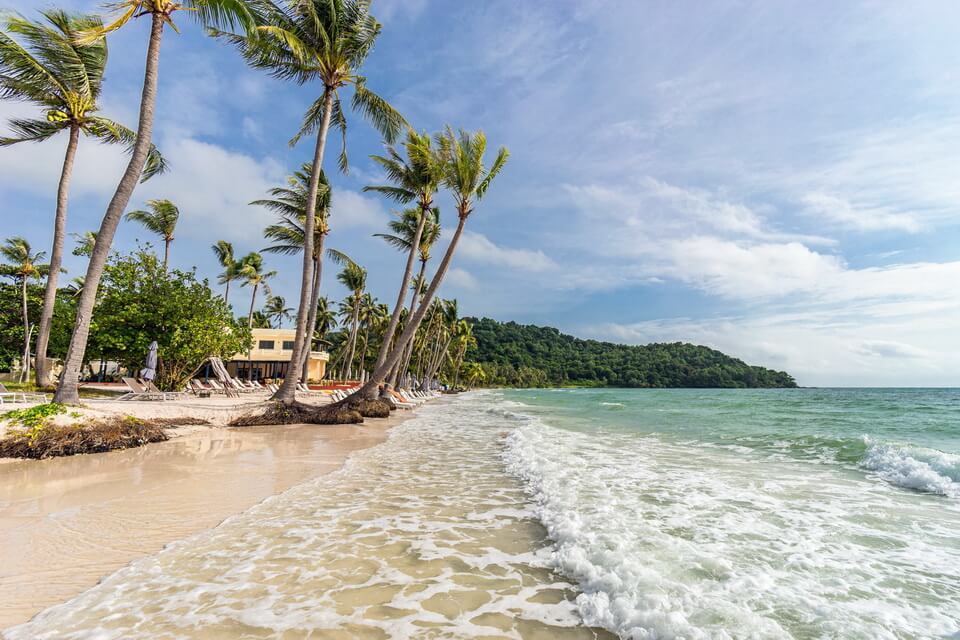
6 most beautiful beaches in Phu Quoc
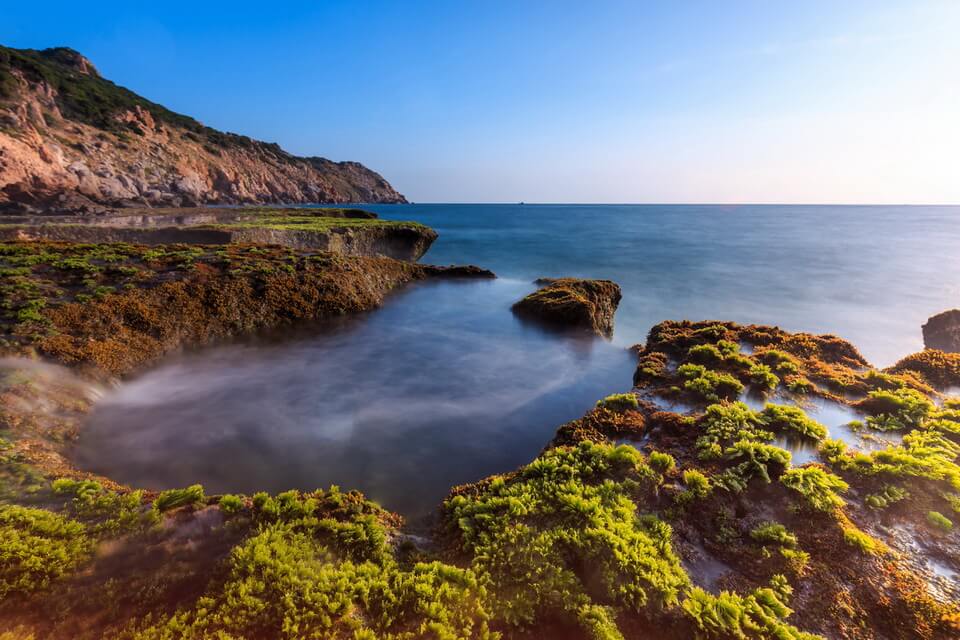
Chilling out at 5 sea paradises of the South Central Coast
Having your heart stolen in Quy Nhon
If you have never been to Quy Nhon, gone around or discovered emerald Ky Co, cool Eo Gio in the late ...
6 gorgeous sea paradises for summer travel
In the hot weather, you may just want to get away to the blue sea, immerse yourself in the refreshin ...
Luxuriously checking in at famous resorts in Phu Quoc
What motivates you every time you think of travel? To get some new experiences, to relieve stress, t ...
Enjoy 24 hours in Da Lat, Vietnam
Today, both foreigners and Vietnamese tourists love to visit Da Lat any day in the year for some coo ...
Tet and others spectacular festivals around the world in January 2020
In January 2020, Tet festival in Vietnam and others spectacular festivals around the world are color ...
Tet Nguyen Dan in Vietnam and best places to visit
Tet Nguyen Dan or Tet is the most important festival in Vietnam. It is the Vietnamese New Year marki ...







